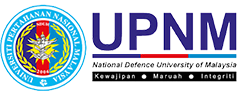MODELLING SLOPE TOPOGRAPHY OF A HILLY TERRAIN USING UNMANNED AERIAL VEHICLE IMAGE TECHNIQUE
Keywords:
Unmanned Aerial Vehicle (UAV), slope topography, hilly terrain, image techniqueAbstract
Unmanned Aerial Vehicle (UAV) as data acquisition tools are becoming more affordable for many civil engineering applications. However, the accuracy of the output is influenced by many parameters. The main objective of this study was to investigate the effect of flight altitude toward the final output measurement accuracy without using Ground Control Point (GCP). Altitude is a parameter that is very important in flying UAV that has to be taken into consideration. Notably, the flight altitude depends on the ground condition, surrounding obstruction, Ground Sample Distance (GSD) and camera monitoring. The UAV should fly in a lower condition when GSD is better. However, this approach rarely can succeed because different site conditions such as flat terrain nor hilly terrain required different flight planning. Therefore, a field experiment will be carried out to investigate the optimum flight altitude to obtain acceptable accuracy of orthomap at hilly type of terrain. This study evaluates both the qualitative of the image and the quantitative aspect of the orthomap. The actual measurement of selected features was made and compared with the on screen measurement. An orthophoto will be generated by using Pix4Dmapper on a selected slope of the hilly terrain in UPNM Campus. Based on the results, different accuracy obtain on flat surface is 0.14% and slope surface is 2.77%, which needed further study to identify the method to reduce error. It is found that the accuracy without GCP is not having large error of more than 1% for flat area. Due to distortion of image on slope surface, the error is larger and needed GCP calibration. This study shows that UAV is a feasible platform for mapping of small area with acceptable accuracy.
Downloads
Downloads
Published
How to Cite
Issue
Section
License

This work is licensed under a Creative Commons Attribution-NonCommercial-ShareAlike 4.0 International License.



